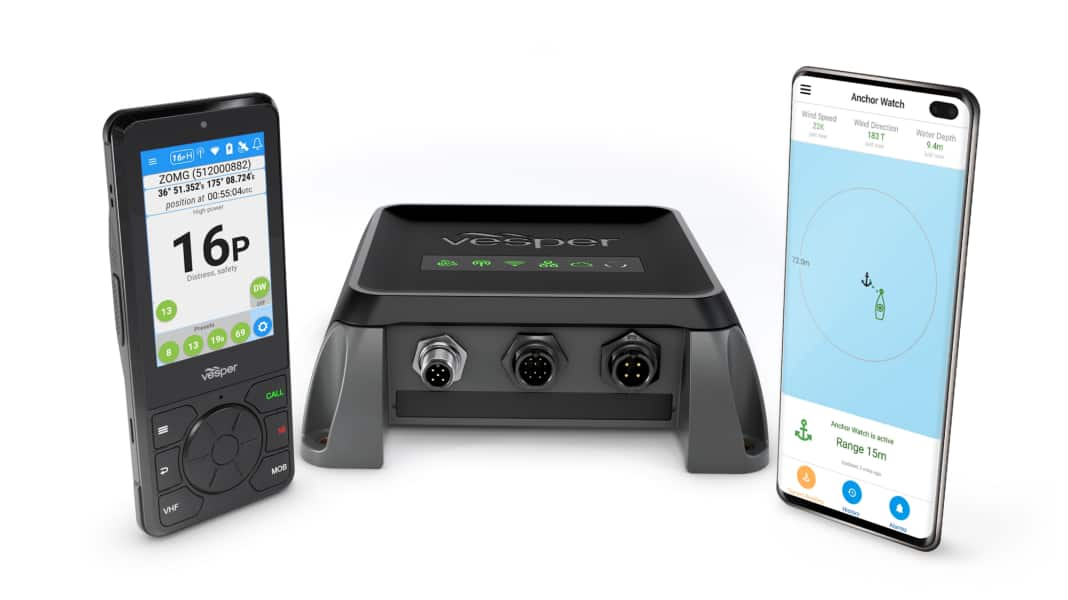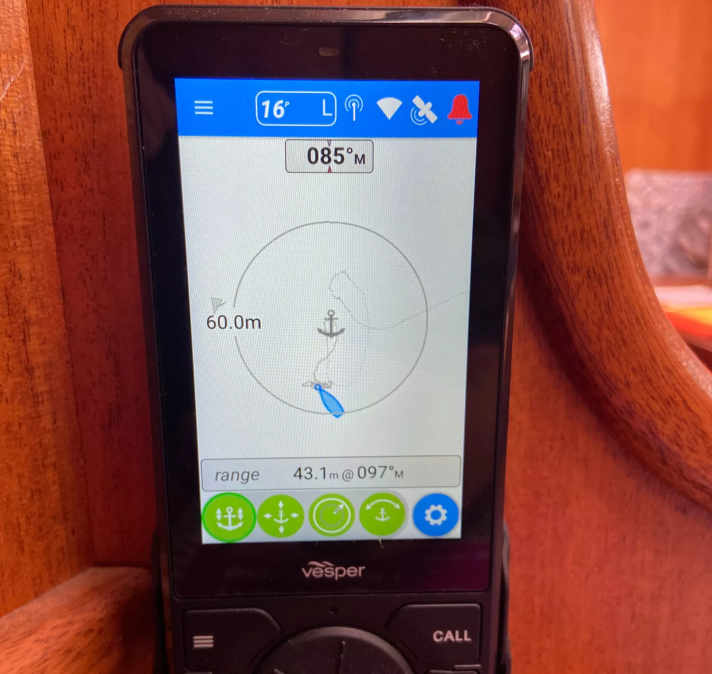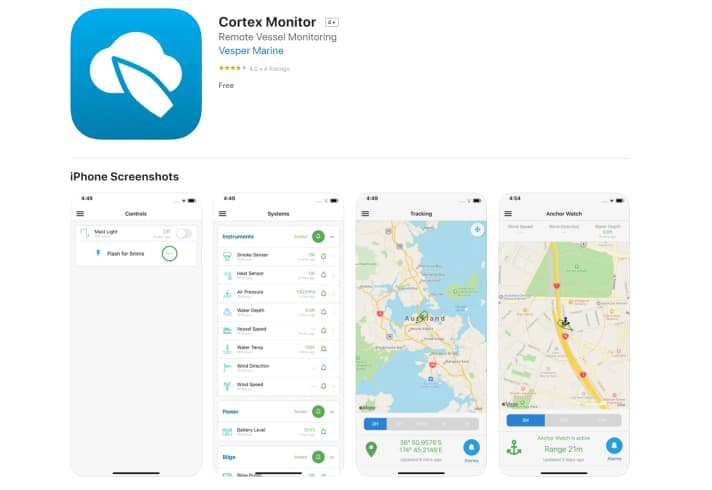
Over the past 20 years since the introduction of AIS, the system has become the standard on almost all pleasure craft. However, there are still awkward installations on board with VHF and AIS devices separated by a splitter and using a common antenna. There are hardly any combined devices. For Vespermarine from New Zealand, this was a reason to develop the Cortex V1 model, which combines both devices in one. It also has numerous other new functions, some of which can be operated remotely from land, such as a sophisticated anchor alarm and a monitor system that monitors the image status or even the wind speed and can even control the air conditioning remotely.
Simple installation without data cable
Installation is simple and can be carried out on any boat. The hub, the device's black box, can be mounted out of sight behind a wall panelling, has a WLAN antenna, its own GPS and is compatible with both NMEA 2000 and NMEA 0183, meaning that the model also works with older plotters. The handheld device is reminiscent of a modern smartphone and can be operated in exactly the same way. It only requires a power connection, but no data connection to the hub, to which it is connected via WLAN. It can therefore be installed anywhere where there is power and no data cables need to be pulled out.

The control panel has various apps for the different functions. In the "VHF" app, it becomes a fully-fledged VHF radio; the emergency button is located on the back of the handset. In the "Plotter" app, it displays all ships that are within range, while "Directory" displays a list of ships in the vicinity that can be selected using the rotary dial and called directly via DSC call. The "Anchor" app offers an anchor watch function in which the position of the anchor can be precisely tracked, with any movements of the anchor shown in grey shading. The "Instruments" menu displays all data from devices connected via the network. As an extra, a second and cordless control unit can be added, which is charged in a charging cradle.
The Cortex V1 can also be operated via an app- but costs extra
The Cortex has a GSM interface and can also report to a mobile phone app via a subscription (159 euros/year). This informs the skipper via push notification if the anchor slips. In addition, numerous encoders and sensors from third-party providers can be connected to the device and monitored from home. For example, the Cortex then sends a push notification via a simple cable connection to the bilge pump or the charger as soon as the pump starts or the shore power fails. The GPS geofencing can also trigger an alarm if the boat leaves a predefined area.

Operating the device is intuitive and a manual is almost superfluous. The menus of the handset are clearly laid out and the entire system is ready for operation within a few minutes after programming the vessel data and MMSI. The loudspeaker for voice communication is integrated into the device and is easy to understand despite the waterproof design (IPx7). Only the purchase price of the Vespermarine Cortex V1 is a little high at around 2,530 euros. This makes it about as expensive as a VHF device, an AIS transponder and a monitoring system combined. However, the advantage of the Cortex is that it combines all these functions in a single device. If you want to do without the VHF function for the time being, you can also buy the Cortex (AIS and monitor) as the Cortex M1 for €1,799 and retrofit a wireless VHF control unit (€799). As Vespermarine was taken over by Garmin at the beginning of the year, it is to be expected that the functions and interfaces to other product families will be further expanded in the future.
The Vespermarine device received four out of five stars in the YACHT test.

